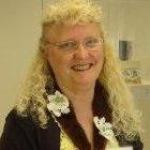Arctic impacts and reverberations of expanding global maritime trade routes
As the Arctic thaws, new opportunities for resource exploration and the opening of new trade routes are expected. Increased passage of commodities through these routes and the related industrialization of the Arctic will introduce both opportunities and risks. These will require international agreements and rules of governance to maintain global stability and protect not only the commercial viability of the U.S. Arctic, but also the local peoples, environment, and natural resources. These new opportunities in the Arctic have impacts that reverberate across the globe. This project focuses on creating the mathematical, geophysical, computational, and social knowledge systems needed to understand how the changing Arctic impacts world trade flows and supply chains and to understand the risks to the Arctic's natural and social ecosystems and governance. The research supports U.S. national security interests, addresses global economic welfare, and facilitates greater resilience to new threats to Arctic communities while allowing for sustainable Arctic development and economic growth. Educational and outreach activities include the use of multimedia to disseminate findings to multiple audiences, both academic and non-academic. Also, the investigators plan to conduct dialogues with local stakeholders and conduct international workshops. Lastly, the project fosters the promotion and retention of women and underrepresented minorities in engineering, including native Alaskans.
This project develops state-of-the-art numerical models to enhance a high-resolution sea-ice forecasting system to predict Arctic sea ice thickness, ice ridge stability, storm surges, and risks posed to ships from icing. To support maritime infrastructure and improve coastal resilience, models based on Arctic coastal dynamics at a variety of scales will also be developed. Creative approaches to improve learning and risk reduction behavior are incorporated into an assessment of risk management from the anticipated increase maritime traffic and related commercial activity. Indigenous approaches to information sharing will be combined with contemporary participatory data collection techniques to develop early warning signs for conflict. Co-production of knowledge with local communities will provide insights that can contribute to models of decision-making under conditions of uncertainty and these will be validated in workshops with local stakeholders. Finally, a variety of techniques ranging from stochastic and robust optimization to game theory are used to develop scalable, globally convergent algorithms. The investigators aim to generate solutions methods that can exploit risk predictions from ice physics, coastal dynamics, and social/governance insights to forecast expected cargo traffic through Arctic passageways over time, along with corresponding changes to traffic flows along alternative world trade routes and supply chains.
This NNA project focuses on creating the mathematical, geophysical, computational, and social knowledge systems needed to understand how the changing Arctic impacts world trade flows and supply chains and to understand the risks to the Arctic's natural and social ecosystems and governance. As part of this large study, a Co-PI will travel to Utqiagvik, Alaska annually for five years, during three summer months for field, educational, and outreach activities.
Season Field Sites:
2019 Alaska - Utqiaġvik (Barrow)
2020 Alaska - Utqiaġvik (Barrow)
2021 Alaska - Utqiaġvik (Barrow)
2022 Alaska - Utqiaġvik (Barrow)
2023 Alaska - Utqiaġvik (Barrow)
Principal Investigators
Resources
Coastal Observers of Barrow Community-Based Monitors
Many coastal communities on the west and north coast of Alaska are threatened by coastal hazards (erosion, storm surge, permafrost thaw, sea ice loss) and that vulnerability is increasing as the environment changes with rapid warming. Using thermal sensors for thaw, an Argus camera system for wave dynamics, and survey instruments for erosion, Community-Based Monitors measure 9 beach profiles over time to determine changes from these hazards in collaboration with the North Slope Borough Office of Emergency Management (NSB OEM) and Applied Research in Environmental Sciences Nonprofit, Inc.
Publications
Project Outcomes
This research project created the mathematical modeling, geophysical, computational and social-systems knowledge, machine learning and other methods, and algorithms needed for:
(1) high resolution forecasting of Arctic sea ice thickness, ice ridge stability, storm surges and risks from icing and accidents to ships through geophysical ice modeling;
(2) integrated, multi-model, multi-scale, multi-physics techniques to forecast coastal dynamics for maritime infrastructure retrofit, design and build accounting for unstable permafrost, as well as bathymetric and thermal control needs;
(3) assessing and managing risks from increased maritime Polar traffic, commercial activity and industrialization to the Arctic peoples, their lands, cultures and economic welfare through annual risk assessment workshops involving social, business, and relevant governmental staff (Utiqiagvik AK, Svalbard Norway)’
(4) social network analyses for conflict risk assessment and design of governance approaches based on co-production of knowledge with insights from Northern Alaska;
(5) predicting maritime incident probabilities and path-based risks under changing conditions;
(6) creating optimization-based models that exploit risk predictions from ice physics, coastal dynamics and social/governance insights to forecast expected cargo traffic through Arctic passageways, along with corresponding changes to traffic flows along alternative world trade routes and supply chains, given geopolitical, ecological, anthropological, geophysical, environmental and regulatory effects and risks in an international environment;
(7) developing tools for and forecasts of how global supply chain structure can be expected to change with changing Arctic waters;
(8) producing investment, governance and policy suggestions through developed normative models;
(9) and more.
Co-production of knowledge, in partnership with local emergency managers and governing bodies, was enabled through community-based monitoring for identified and relevant hazards, recruit monitor workshops, summer programs for all, and hazard preparedness outreach to residents.




